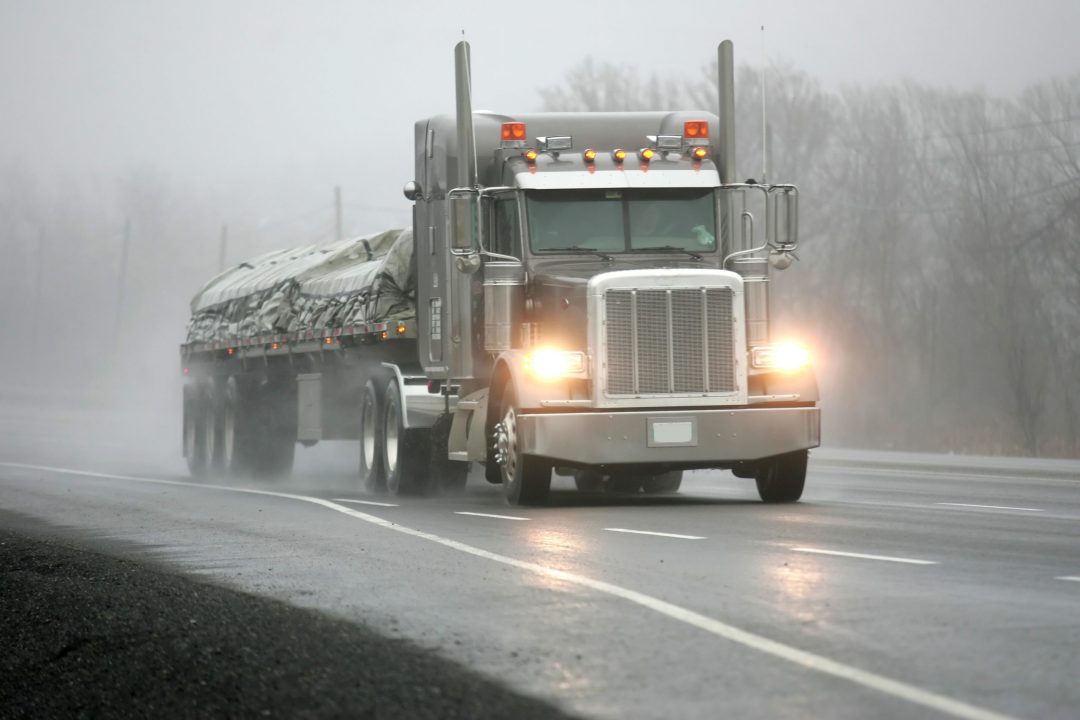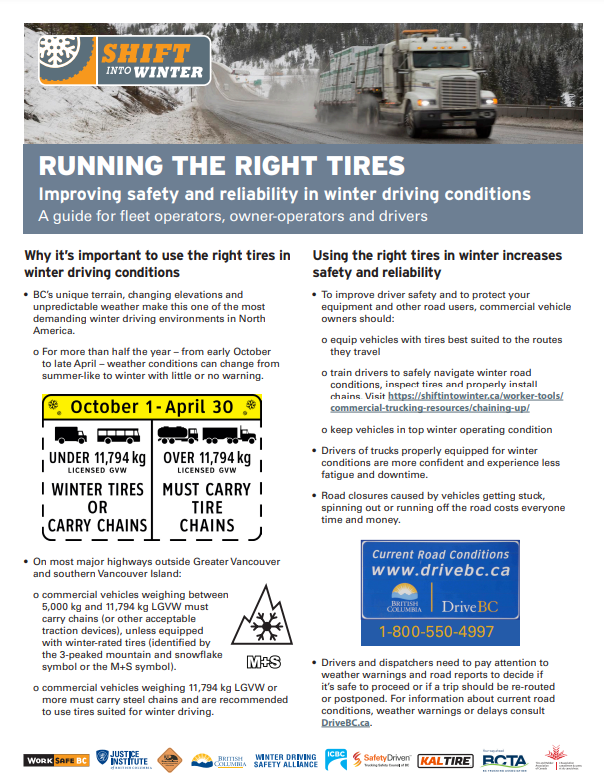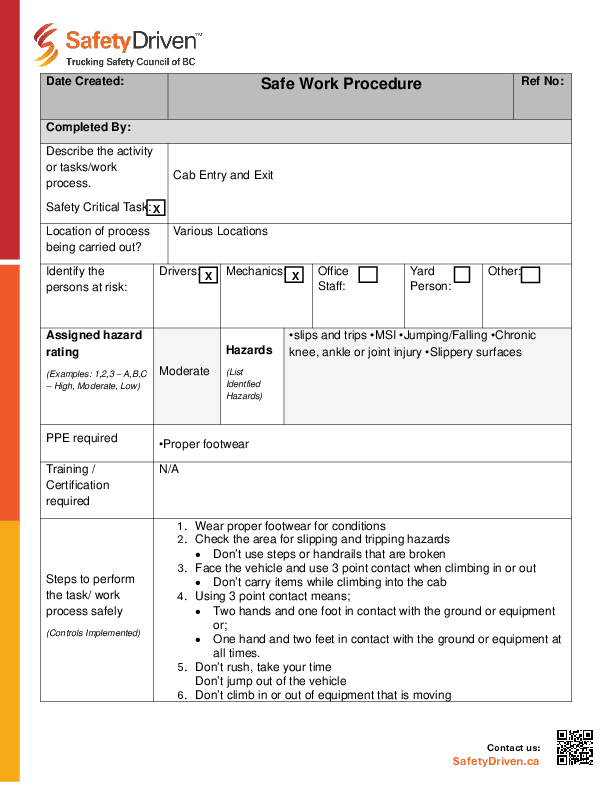
Drive Safely into Spring
Spring is coming—eventually
With winter in the rear-view mirror, we can forget about it, right?! Not so fast! Winter hasn’t completely released its icy grip on us and spring has its own driving challenges.
Personal Safety
At all times of year, falling is the leading cause of injury to truck drivers. WorkSafeBC says 37% of fall injuries happen when drivers are entering or exiting the cab. Maintain 3-point contact when you’re getting in and out of your vehicle—keep two hands and one foot, or two feet and one hand, on the vehicle. Don’t jump from the cab—the split second of time you save is not worth risking a sprained or broken ankle or back injury.
Always be conscious of the risk of back injury—sitting all day is a problem for professional drivers. Take care of back pain before it sidelines you.
Your Vehicle
Your truck needs some spring TLC! Winter weather is hard on vehicles. Any part of your vehicle that was covered by snow or ice or came into contact with road salt needs to be checked for damage, including axles, rims, suspension, hoses, and anything made of plastic or rubber. Don’t put off repairs or replacement for just one more trip; breakdowns are never fun.
Before you change your winter tires, check out the conditions on the roads you’ll travel. Although commercial vehicles are required to carry chains until April 30, make sure the roads you travel are not typically covered by snow later than that.
The Spring Road
Harsh winter weather wreaks havoc on roads, creating potholes, uneven pavement, and soft shoulders. Small holes fill with snow and ice, which melt and then freeze again, expanding and enlarging the hole; eventually there is a big pothole or uneven pavement that is damaged further by snow clearing. The deep holes left behind can swallow a compact car and cause significant damage to your truck.
Check for road bans and be aware that shoulders may not be as hard as in the winter. Your vehicle could sink into a soft shoulder, and even tip over, depending on what you’re driving.
Watch out for Bambi! As the weather warms up, there is more wildlife on the roads, especially early in the morning and just after sunset. These are also the times your vision is most compromised by the angle of the sun. Watch for movement in ditches and behind trees, and for eyes reflected by your headlights, particularly when there are wildlife warning signs. Stay alert—you won’t have much time to react if something darts out onto the road.
Spring Weather
Spring weather is fickle! Remember that roads could be bare almost everywhere but there could be ice in mountain passes or on roads in shadow. Heavy rain can cause flooding and even hydroplaning or it can freeze and create black ice.
Hydroplaning doesn’t happen often to commercial vehicles with proper tires because their size and weight don’t allow water to affect the tires’ contact with the road. When it does happen, it’s because the water is very deep and it catches the driver off-guard. If it happens, hold the wheel steady and ease back on the throttle; don’t try to brake or accelerate. If the water is deep enough, the water’s resistance causes the wheel(s) to slow down. Driving too fast through water can cause the vehicle to pull to one side. If you hit a large puddle on the right side of the vehicle, it may pull to the right.
Black ice can catch you by surprise if you’re not looking out for it. If you are entering a corner while braking, the steer tires can lock up and cause the truck to slide in a straight line, unable to turn. If the steering doesn’t lock up, the drive axles may. When that happens, the truck will start to slide sideways. The trailer, especially if loaded, will start to push the back end of the truck in the direction the truck is sliding, causing the truck to jackknife. Avoid braking in corners. Travel at the desired speed for the road conditions before entering a corner or bend in the road.
Other Drivers
Nice weather brings people out onto the roads. With the lockdowns of the pandemic and the winter blahs, people haven’t been driving as much as usual. It’s likely they’ve forgotten a few things and present a risk to you as you do your job. Keep as much space around your truck as possible. Make allowances for other drivers and be prepared for anything!
Latest Resources
Running the Right Tires
Road Safety at WorkUse this guide for fleet operators, owner-operators, and drivers to help improve safe ...
Safe Work Procedure: Cab Entry & Exit
An Employer can make use of a safe work procedure (SWP) by training new and existing ...

